According to the 2011 census, the population of Amritsar was 1,132,761 and it is the second most populous city of Punjab. It is one of ten Municipal Corporations in the state and Karamjit Singh Rintu is the current mayor of the city. The city is situated 217 km (135 miles) northwest of state capital Chandigarh and 455 km (283 miles) northwest of New Delhi, the national capital. It is near Pakistan, with the Wagah Border being only 28 km (17.4 miles) away. The closest major city is Lahore, the second largest city in Pakistan, located 50 km (31.1 miles) to the west.
Amritsar (literally, the tank of nectar of immortality) was founded in 1577 by the fourth Sikh guru, Guru Ram Das.
 Sri Harmandir Sahib ("The abode of God"), also known as Darbar Sahib, (Punjabi pronunciation: [derbar sahib]), informally
referred to as the Golden Temple, is a Gurdwara located in Amritsar. It is one of the most revered spiritual sites of
Sikhism.The construction of Harmandir Sahib is intended to build a place of worship for men and women from all walks of
life and all religions to worship God equally. The four entrances (representing the four directions) to get into the
Harmandir Sahib also symbolise the openness of the Sikhs towards all people and religions. Over 100,000 people visit the
shrine daily for worship, and also partake jointly in the free community kitchen and meal (Langar) regardless of any
distinctions, a tradition that is a hallmark of all Sikh Gurdwaras.
Sri Harmandir Sahib ("The abode of God"), also known as Darbar Sahib, (Punjabi pronunciation: [derbar sahib]), informally
referred to as the Golden Temple, is a Gurdwara located in Amritsar. It is one of the most revered spiritual sites of
Sikhism.The construction of Harmandir Sahib is intended to build a place of worship for men and women from all walks of
life and all religions to worship God equally. The four entrances (representing the four directions) to get into the
Harmandir Sahib also symbolise the openness of the Sikhs towards all people and religions. Over 100,000 people visit the
shrine daily for worship, and also partake jointly in the free community kitchen and meal (Langar) regardless of any
distinctions, a tradition that is a hallmark of all Sikh Gurdwaras.Amritsar has been chosen as one of the heritage cities for HRIDAY - Heritage City Development and Augmentation Yojana scheme of Government of India.
Jallianwala Bagh massacre
The Jallianwala Bagh massacre, involving the killings of hundreds of Indian civilians on the orders of a senior British
military officer, Reginald Edward Harry Dyer, took place on 13 April 1919 in the heart of Amritsar, the holiest city of
the Sikhs, on a day sacred to them as the birth anniversary of the Khalsa (Vaisakhi day).
Operation Blue Star (1 – 6 June 1984) was an Indian military operation ordered by Indira Gandhi, then Prime Minister of
India to curb and remove Sikh militants from the Golden Temple in Amritsar. The operation was carried out by Indian
army troops with tanks and armoured vehicles.Militarily successful, the operation aroused immense controversy, and
the government's justification for the timing and style of the attack are hotly debated.Operation Blue Star was
included in the Top 10 Political Disgraces by India Today magazine.
Amritsar is located at 31.63°N 74.87°E with an average elevation of 234 metres (768 ft).
Amritsar is connected by rail to almost every major city in India. Amritsar railway station ,the main terminus station is
the busiest station of the state in terms of number of originating and terminating trains. The Samjhauta Express runs
from Delhi through Amritsar to Lahore in Pakistan.
Amritsar is located on the historic Grand Trunk Road (G.T Road), also known as NH 1 now renumbered as National Highway 3,
and therefore very well connected to the road network. Additionaly, NH 54 (Old NH15), NH 354 and NH 503A connect Amritsar
to other parts of state and rest of India. Daily bus services run to and from Ambala, Patiala, Delhi, Chandigarh and
Jammu. Rs 450,000,000 is being spent to expand the Amritsar-Jalandhar stretch of G.T. Road to four lanes. In 2010,
elevated road with four lanes connected to the National highway for better access to the Golden Temple has been started.
The government of Punjab pledged Rs. 580 crore (100 million dollars) for the Amritsar BRTS for the city.It is hoped
that Amritsar BRTS will help relieve traffic congestion and improve air quality. The Amritsar BRTS (or Amritsar Metrobus)
has commenced operations and is open to the public in some areas and rest is work in progress.
The pride and soul of the Sikhs, The Golden Temple has been a centre of lure in the middle of Indians as well as foreign
travellers ever since ages. The golden body, mystic pond, delicious halwa (desert) and on the whole myths construct this
religious site a pleasure of religious populace. Believers whichever their religion, caste and gender throng Amritsar in
search of everlasting bliss and get astonished seeing the humble nature and profound entrenched beliefs of the Sikhs
towards their religion.
Positioned inside a distance of one kilometre from the Golden Temple, Jalianwala Bagh is the famous public ground where
the British Army did the monstrous act of public massacre. The episode took place on 13th April, 1919 which was the
Punjabi New Year Day. It is on this promising day that British occupying forces cruelly opened fire on a nonviolent mass
and as a result approximately 379 people were left dead and around 1100 people wounded. In 1951 a monument was well-known
on this ground to remember the massacre. Today a huge memorial stone is found in Jalianwala Bagh where every traveller
in Punjab pays his/her homage.
Wagah Border is one of the must visit places of tourist Interest around Golden Temple in Amritsar and has constructed
itself as a firm favorite among the Indian tourists. It is the only road border crossing between India and Pakistan and
located at a distance of around 30 km from the Golden Temple. The ceremonial of Beating Retreat and Change of Guard make
this place extremely appreciated. The soldiers of equally of both the countries display their sincere eagerness for own
country and the patriotic feel reach its peak among the viewers present there in the afternoon. This pursuit ceremony
involves display of strong patriotic feel of the armies for their own states and people assemble here every day to
witness this thrilling activity in either side of the border.
A momentous Hindu Temple in Amritsar, Durgiana is in the region of one and half kilometre from the Golden Temple and looks
like a copy of the same, devoted to Goddess Durga, the temple was built in 1908 by Harsai Mal Kapoor. The temple compound
encloses the seats of Lord Hanuman, Mata Shitla, along with Lakshmi Narain.
It is a Sikh temple built at the ground of the Golden Temple by Guru Hargobind Sahib as a place of fair dealing and for
resolving sequential issues. It is known to be the uppermost seat of earthly power of Khalsa. The literal meaning of Akal
Takht is throne of the timeless one and it is a representative of the political sovereignty of the Sikhs.
To be found at a distance of around 22 km from the Golden Temple, Tarn Taran is a Sikh pilgrimage site in the Tarn Taran
District of Punjab. The Gurudwara was constructed by the fifth Sikh Guru, Arjan Dev. It is supposed that the Sarovar
(pond) located in this Gurudwara is the biggest in the middle of all the Sikh Shrines. Tarn Taran is counted among the
most well-liked Sikh pilgrimage sites in India and thronged by the devotees every month on the day of Amavas
(New-Moon Day).
Hari Ke Pattan or Harike Wetland is claimed to be the main wetland in northern India. It is a man-made riverine,
lacustrine wetland which spreads across the three district of Punjab namely Amritsar, Ferozepur and Kapurthala. The
wetland provides protection to several species of snakes, turtles, amphibians and fishes.
Devoted to Maharaja Ranjit Singh, ‘the Lion of Punjab’, who not tied up a major part of Punjab from the manacles of the
Mughals, the Maharaja Ranjit Singh Museum is located in Lawrence Road, Company Bagh of Amritsar. The museum displays the
chivalric behavior of the Maharaja along with artifacts connected with the greatest battles he fought with his enemies.
The light and sound show creates the feel of a real war circumstances with the thriving sound effects taking you to the
past.
A chronological fort in Bathinda District of Punjab, Bathinda Fort is around 160km from the Golden Temple and known for
its intense association with the history of Sultana Razia’s custody. The fort is situated in the Malwa Region of Punjab.
It looks like a sheep in the sea of sand and looks imposing for its architecture. The fort foundation encloses a
Gurudwara, which was built in the memory of Guru Gobind Singh.
Located in Hall Bazar, Amritsar, Jama Masjid Khairuddin is a creatively enriched religious site. It is the same place
where Tootie-e-Hind Shah Attaullah Bukhari protested against the British rule. The mosque was built by Mohammad
Khairuddin in 1876.
In the Punjab, during World War I (1914–18), there was considerable unrest particularly among the Sikhs, first on account
of the demolition of a boundary wall of Gurdwara Rakab Ganj at New Delhi and later because of the activities and trials
of the Ghadarites, almost all of whom were Sikhs. In India as a whole, too, there had been a spurt in political activity
mainly owing to the emergence of
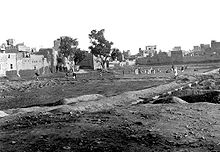 two leaders: Mahatma Gandhi (1869–1948) who after a period of struggle against the British in South Africa, had returned to
India in January 1915, and Annie Besant (1847–1933), head of the Theosophical Society of India, who on 11 April 1916
established the Home Rule League with autonomy for India as its goal. In December 1916, the Indian National Congress,
at its annual session held at Lucknow, passed a resolution asking the king to issue a proclamation announcing that it is
the "aim and intention of British policy to confer self-government on India at an early date".
two leaders: Mahatma Gandhi (1869–1948) who after a period of struggle against the British in South Africa, had returned to
India in January 1915, and Annie Besant (1847–1933), head of the Theosophical Society of India, who on 11 April 1916
established the Home Rule League with autonomy for India as its goal. In December 1916, the Indian National Congress,
at its annual session held at Lucknow, passed a resolution asking the king to issue a proclamation announcing that it is
the "aim and intention of British policy to confer self-government on India at an early date".
On 10 April 1919, Satya Pal and Saifuddin Kitchlew, two popular proponents of the Satyagraha movement led by Gandhi,
were called to the deputy commissioner's residence, arrested and sent off by car to Dharamsetla, a hill town, now in
Himachal Pradesh. This led to a general strike in Amritsar. Excited groups of citizens soon merged into a crowd of about
50,000 marching on to protest to the deputy commissioner against the arrest of the two leaders. The crowd, however, was
stopped and fired upon near the railway foot-bridge. According to the official version, the number of those killed was
12 and of those wounded between 20 and 30. Evidence before an inquiry of the Indian National Congress put the number of
the dead between 20 and 30.
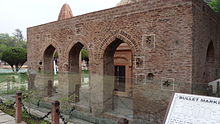
Three days later, on 13 April, the traditional festival of Baisakhi, thousands of Sikhs, Muslims and Hindus gathered in
the Jallianwala Bagh. An hour after the meeting began as scheduled at 16:30, Dyer arrived with a group of sixty-five
Gurkha and twenty-five Baluchi soldiers. Without warning the crowd to disperse, Dyer blocked the main exits and ordered
his troops to begin shooting toward the densest sections of the crowd. Firing continued for approximately ten minutes.
A British inquiry into the massacre placed the death toll at 379. The Indian National Congress determined that
approximately 1,000 people were killed.
Operation Blue Star
Official reports put the number of deaths among the Indian army at 83, with 493 civilians and Sikh militants killed.
In addition, the CBI is considered responsible for seizing historical artefacts and manuscripts in the Sikh Reference
Library before burning it down.Four months after the operation, on 31 October 1984, Indira Gandhi was
assassinated by two of her Sikh bodyguards in what is viewed as an act of vengeance. Following her assassination, more
than 3,000 Sikhs were killed in anti-Sikh pogroms.
Geography and climate
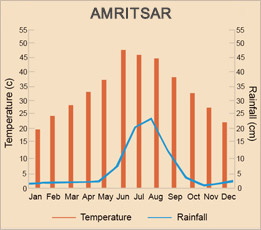
Amritsar has a semiarid climate, typical of Northwestern India and experiences four seasons primarily: winter season
(December to March) with temperature ranges from 0 °C (32 °F) to about 15 °C (59 °F), summer season (April to June)
where temperatures can reach 42 °C (108 °F), monsoon season (July to September) and post-monsoon season
(October to November). Annual rainfall is about 681 millimetres (26.8 in).[18] The lowest recorded temperature is -3.6 °C
(25.5 °F), was recorded on 9 December 1996 and the highest temperature, 48.1 °C (118.6 °F), was recorded on 22 May 2013.
Religion

Amritsar is the holiest city of the Sikhs.
The 2011 Census of India recorded Hinduism and Sikhism as the main religions of Amritsar city with respectively 49.36%
and 48% of the population following them. However, Sikhs form a majority of close to 70% in the Amritsar District
including the rural areas and some of the other towns. In Amritsar city, Christianity was followed by 1.23% and Islam
by 0.51%. Around 0.74% of the population of the city stated 'No Particular Religion' or another religion.
Transport
Air
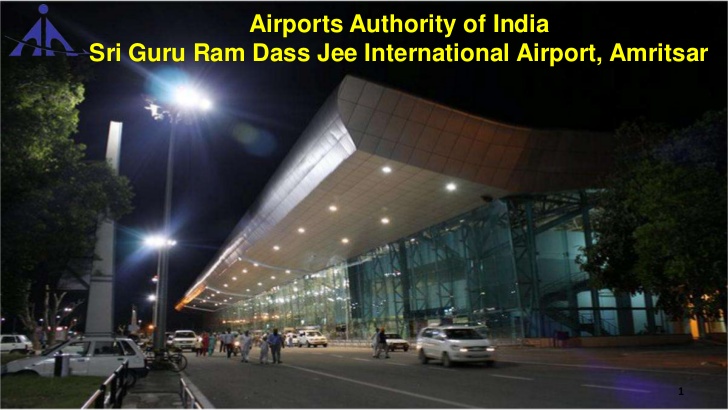
Amritsar's Sri Guru Ram Dass Jee International Airport is the primary airport of the state of Punjab.It is also the
largest and busiest airport of the state, with direct International flights to cities like Birmingham, Singapore, Dubai,
Doha, Kuala Lumpur, Ashgabat among others and direct domestic Connectivity to over 12 Indian Cities.
Rail
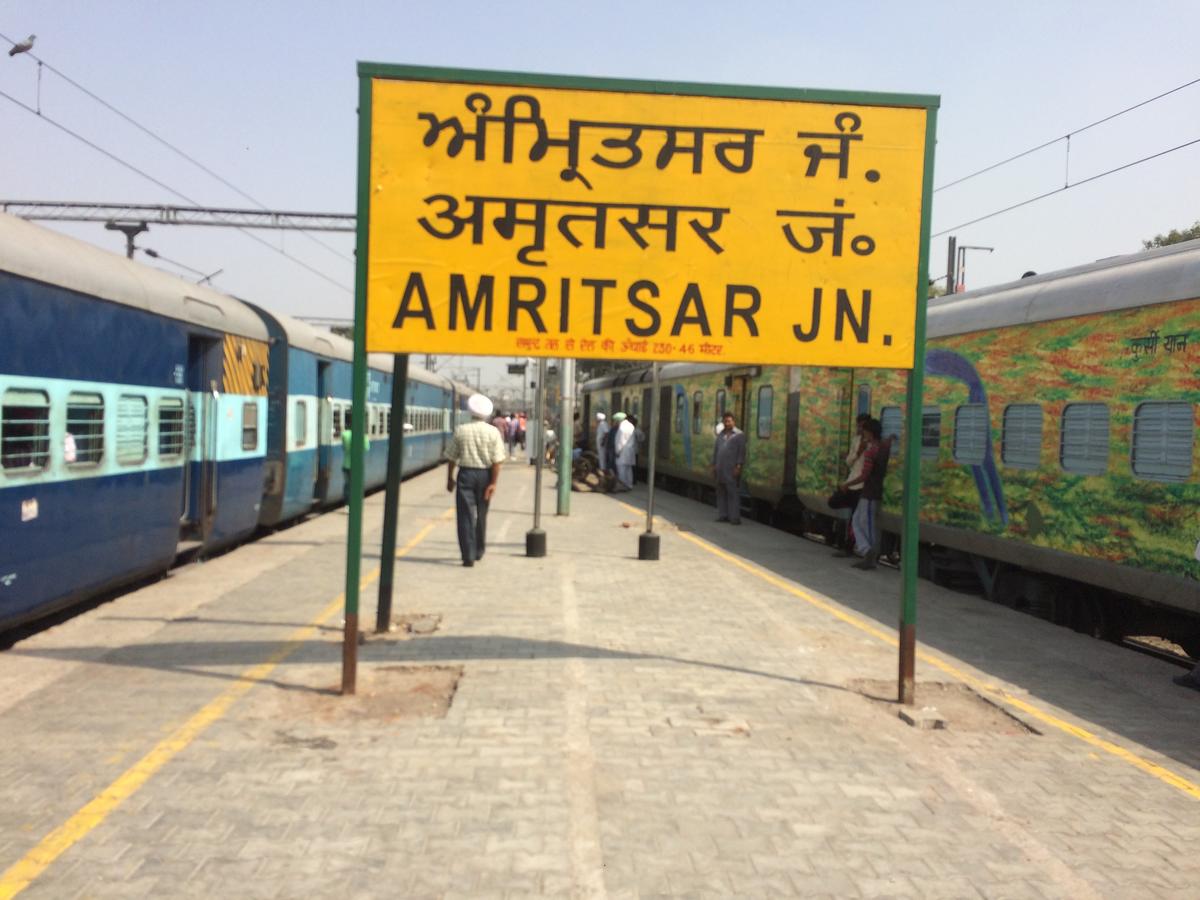
Indian Railways has proposed a high-speed rail line(Bullet train) to serve Delhi-Amritsar via Panipat-Ambala-Chandigarh-
Ludhiana-Jalandhar.[citation needed] The train is to run at high speeds of 160 km/h, second in India to the Ahmedabad -
Mumbai bullet train. It will travel the 445 km between the two cities in 2.5 hours (compared to the current time of
5 hours). Companies from Japan, China, UK and Canada have expressed an interest in the project. The contract for
building the line were to be awarded at the end of May 2008. Other lines of this kind have proposed in Mumbai, Ahmedabad,
Pune, and Kolkata.
Road
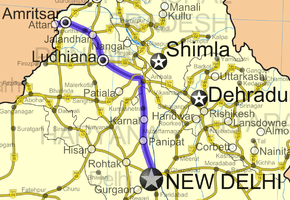
Amritsar BRTS
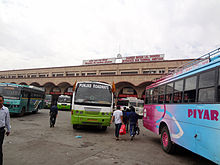
City bus Service is also present in the city. Amritsar is also connected with Lahore, Pakistan via the old Grand Trunk
Road.
Tourists Places in amritsar

Golden Temple
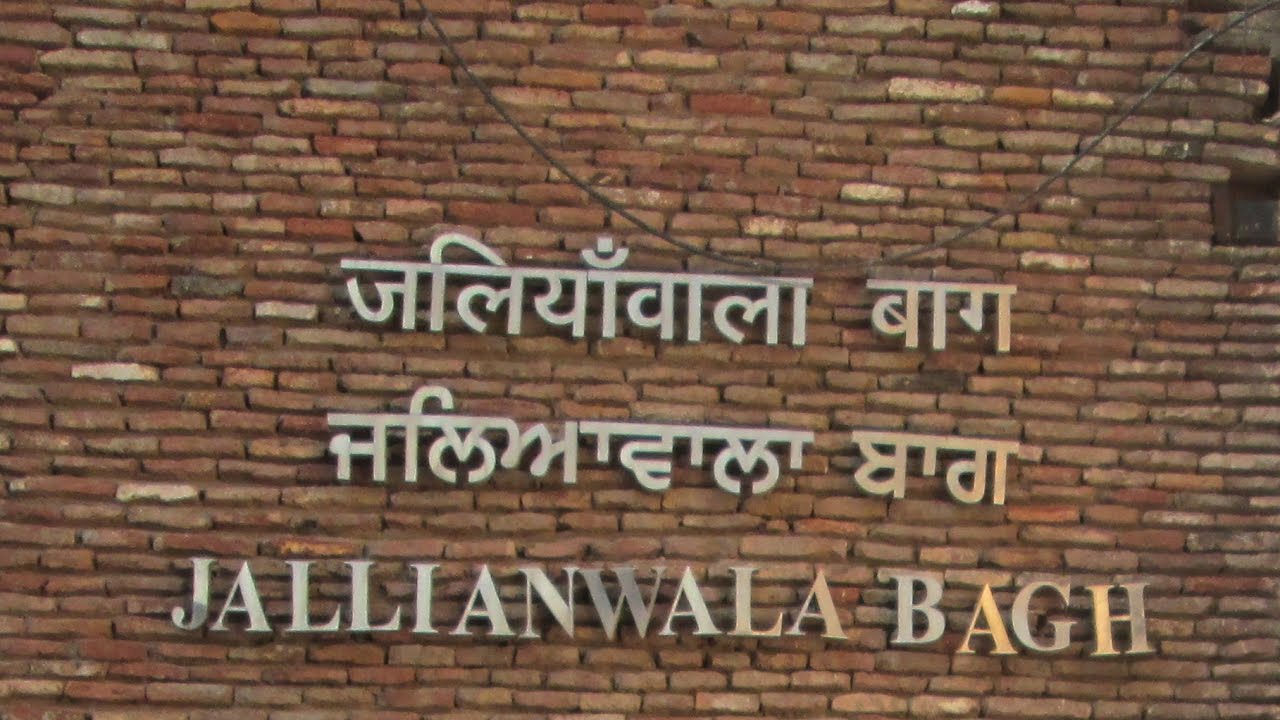
Jalian-Wala-Bagh

Wagah Border
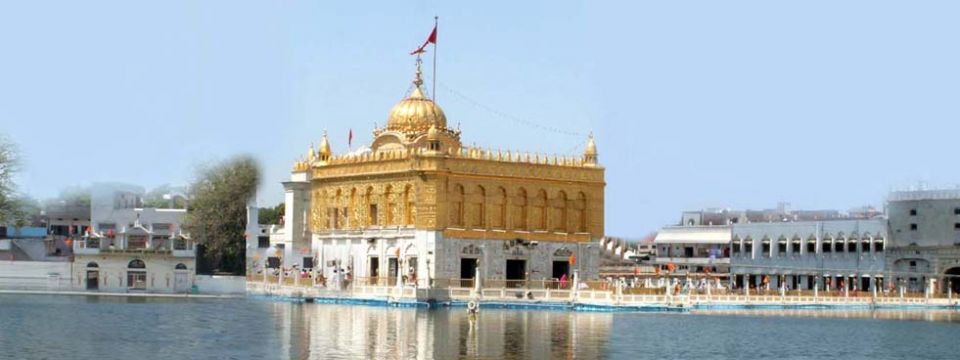
Durgiana Temple Amritsar

Akal Takht
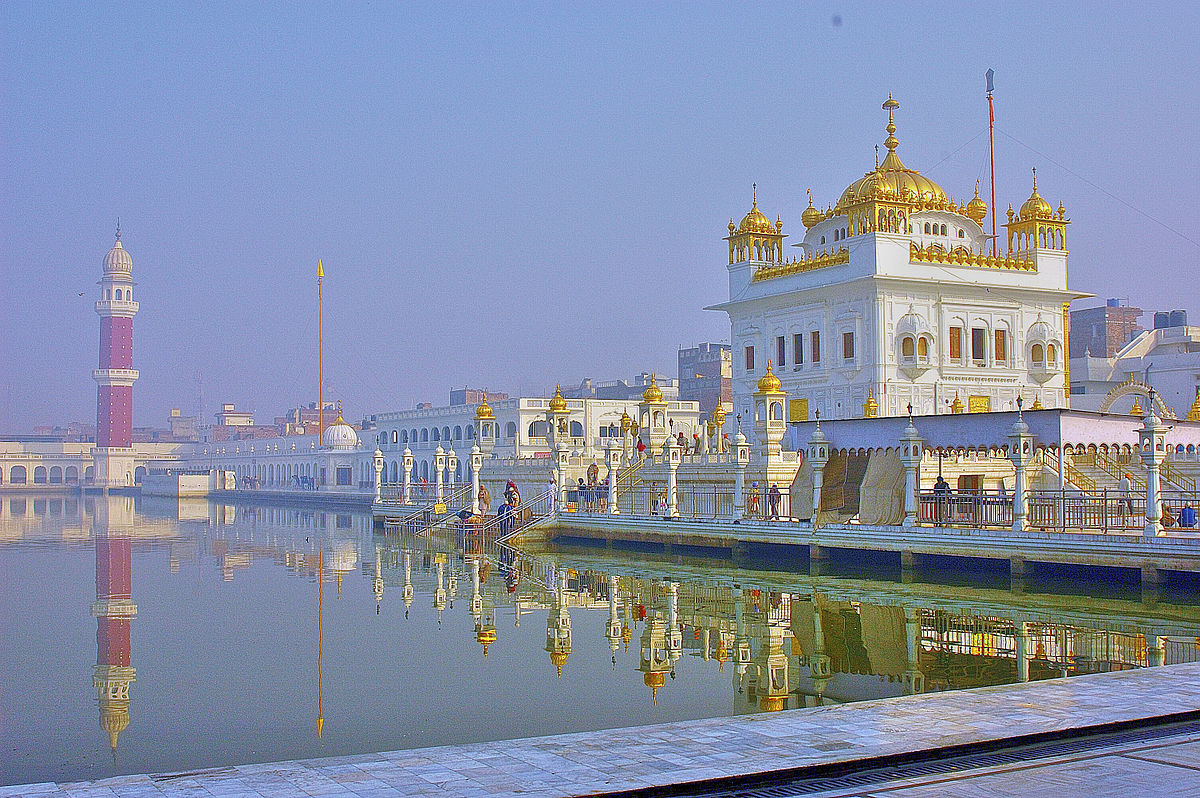
Tarn Taran
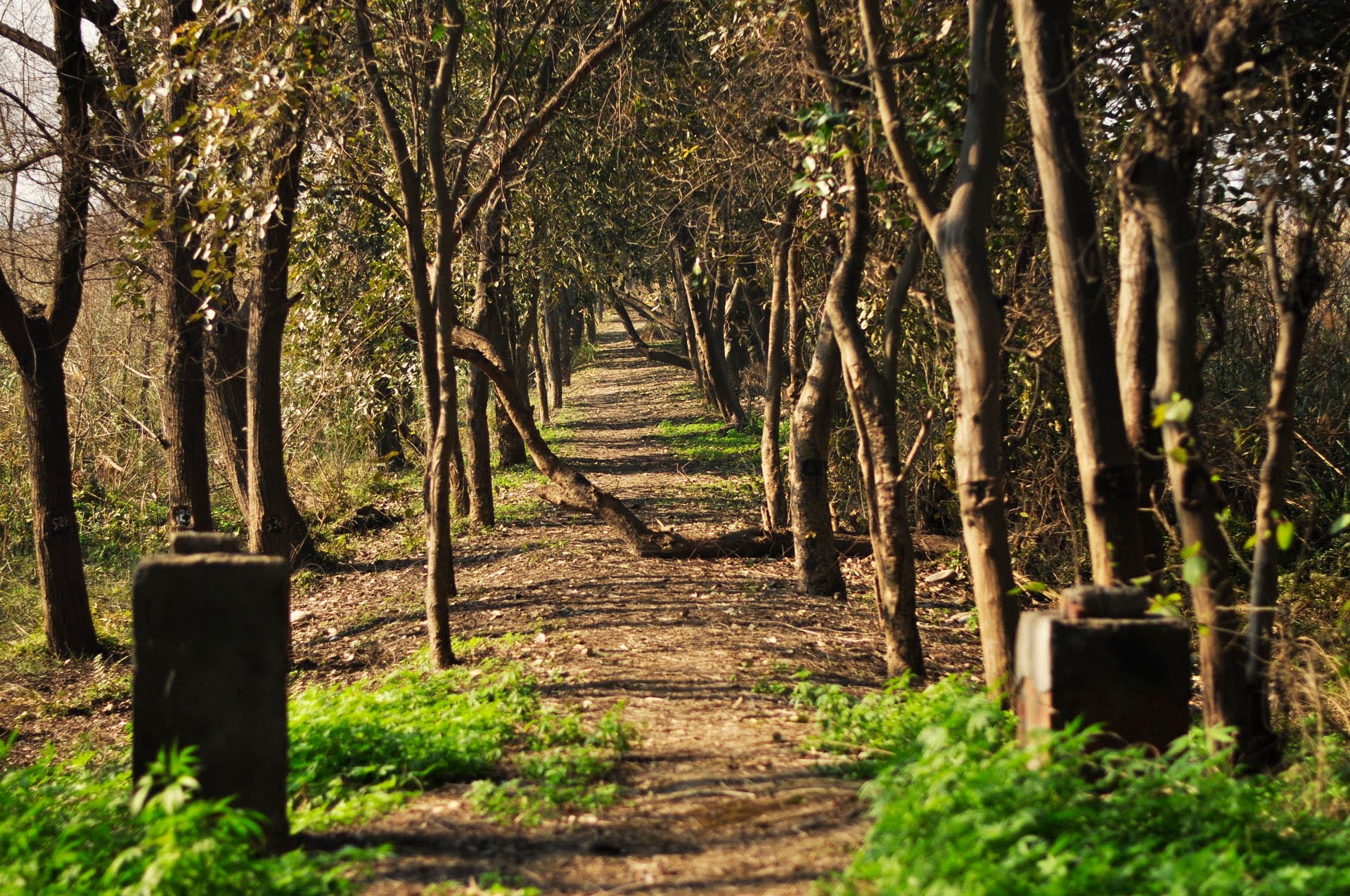
Harike Wetland
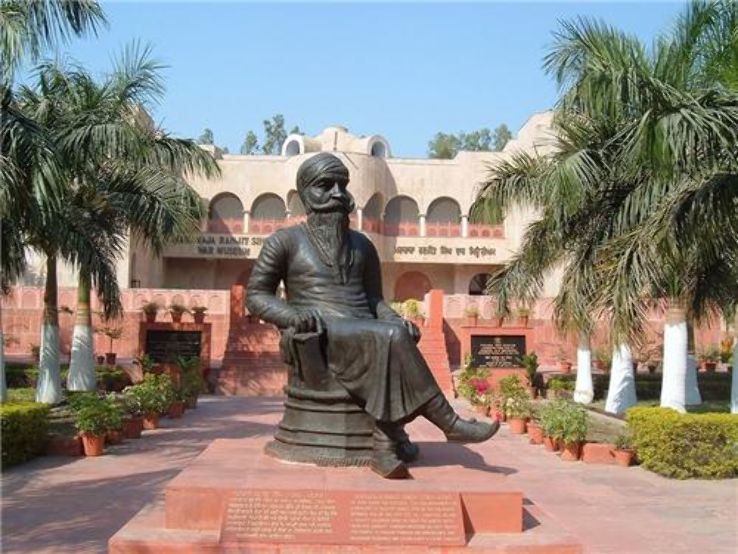
Maharaja Ranjit Singh Museum

Bhatinda Fort
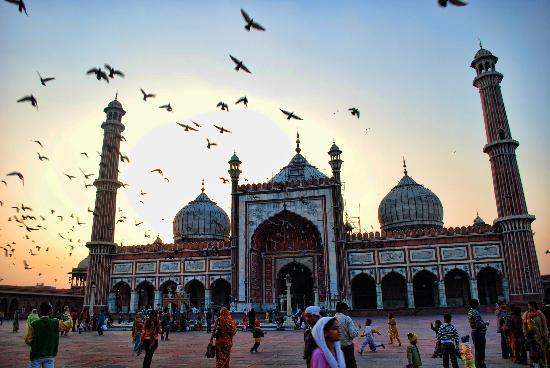
Jama Masjid Khairuddin
